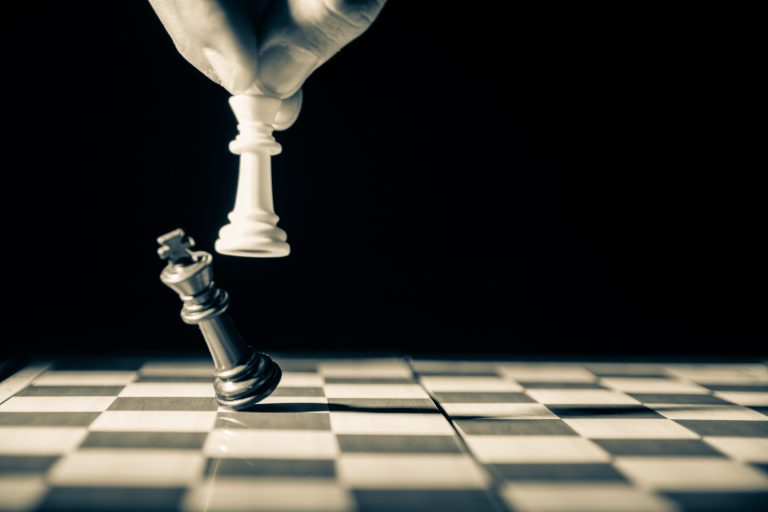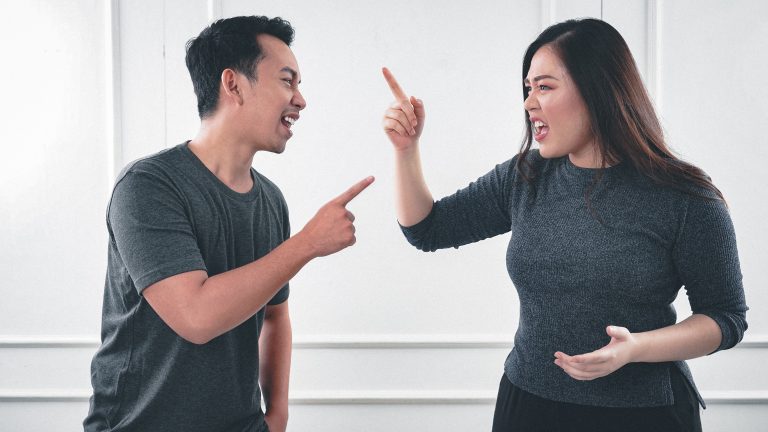What Does the Term Karate Mean?
Karate is a Japanese word that originates from the words “Kara” and “Te”. “Kara” means empty and “Te” means hand. Thus, karate is often translated as “empty hand”. The word karate embodies the essence of the martial art, which was developed in Okinawa, Japan in the early twentieth century.
The term karate can also be understood in the context of the history and evolution of this martial art. Karate originated as an indigenous form of fighting in Okinawa. It was practiced by the local people, who were predominantly farmers, fishermen, and craftsmen. These people developed a range of fighting techniques that they used to defend themselves against bandits and pirates, who were prevalent in the region at the time.
Over time, these techniques were refined and developed into a structured martial art system that we now know as karate. However, the roots of the martial art can still be seen in its focus on practical self-defense techniques.
The Etymology of the Word Karate
As mentioned earlier, the word karate is derived from the Japanese words “Kara” and “Te”. The meaning of the word karate can be further explored by examining the origins of these two words.
The word “Kara” has multiple meanings in Japanese. It can mean “empty,” “void,” “hollow,” or “bare.” The meaning of this word in the context of karate refers to the philosophy of the martial art, which stresses the importance of emptying the mind of preconceived notions and being receptive to new ideas.
The word “Te” means hand, but it can also refer to the entire body, as well as the mind and spirit. Thus, the use of the term “Te” in karate implies a holistic approach to training.
The Philosophy of Karate
The philosophy of karate is based on the principles of respect, discipline, and self-control. These principles are embodied in the training and practice of karate, which emphasizes the development of the mind, body, and spirit.
One of the central tenets of karate is the concept of “kata”. Kata are prearranged sequences of movements that simulate combat situations. They are used to develop technique, timing, power, and focus. The practice of kata also helps to develop mental discipline, as practitioners must memorize and perfect complex sequences of movements.
Another important aspect of karate is the practice of sparring, or “kumite”. Kumite involves training with a partner to simulate real combat situations. This practice emphasizes the development of timing, distancing, and control. The practice of kumite also helps to develop the ability to remain calm and focused under pressure.
The Evolution of Karate
Karate has undergone a significant evolution since its early years in Okinawa. It has spread to many other countries and has been adapted to suit the needs and cultures of different populations.
One of the most significant developments in the history of karate was the introduction of sport karate. Sport karate emphasizes competition and the use of karate techniques in a controlled environment. This has led to the development of a range of karate tournaments and competitions, which are now held all over the world.
Another significant development in the evolution of karate has been the incorporation of other martial arts styles into its practice. For example, many karate schools now incorporate elements of judo, jiu-jitsu, and wrestling into their training regimes.
The Importance of Understanding the Meaning of Karate
Understanding the meaning of karate is important for anyone who is interested in practicing this martial art. Knowing the origins and philosophy of karate can help to deepen one’s appreciation of the practice and to develop a greater understanding of its significance.
Moreover, understanding the meaning of karate can help practitioners to develop the correct mindset for training. This includes cultivating a sense of respect, discipline, and self-control, as well as being receptive to new ideas and approaches.
In conclusion, the term karate refers to a martial art that was developed in Okinawa, Japan in the early twentieth century. The term “karate” means “empty hand” and embodies the essence of the martial art. The philosophy of karate emphasizes the development of the mind, body, and spirit through respect, discipline, and self-control. Through a deeper understanding of the meaning of karate, practitioners can develop a greater appreciation for the art and approach their training with the correct mindset.
What Does the Term Karate Mean?
Karate is a martial art form that originated in Okinawa, Japan, in the 19th century. The word „karate“ comes from the Japanese words „kara“ meaning „empty“ and „te“ meaning „hand.“ So, the term „karate“ can be loosely translated to mean „empty hand.“
Over the years, karate has evolved into a popular sport that is practiced by millions of people worldwide, with different schools and styles that have emerged based on variations in techniques and philosophies. As a result, many people have questions about the term and its meaning. In this article, we answer some of the most frequently asked questions about the term „karate.“
What is the Origin of Karate?
As mentioned earlier, karate originated in Okinawa, Japan, in the early 19th century. It was developed by many different martial arts experts who were seeking ways to defend themselves against bandits and other criminals. The techniques of karate were refined over time and included many elements of Chinese kung fu, which were brought to Okinawa by Chinese immigrants.
What Are the Basic Principles of Karate?
Karate is built around several fundamental principles, including discipline, respect, patience, and perseverance. Students of karate are expected to demonstrate these traits during their training, and they are also expected to apply these principles to their daily lives.
One of the most important principles of karate is the idea of „kata,“ which involves performing a set sequence of movements that simulate fighting scenarios. Practicing kata helps students to develop muscle memory and refine their techniques, while also building their mental and physical stamina.
What Are the Different Styles of Karate?
There are many different styles of karate, which can be broadly categorized into two main groups: traditional and modern.
Traditional styles of karate, such as Shotokan and Goju Ryu, focus on preserving the original techniques and philosophies of the art form. They often place a greater emphasis on kata and other traditional training methods, and they may have more rigid rules and protocols.
Modern styles of karate, such as Kyokushin and Shito Ryu, have evolved to incorporate new techniques and training methods, often borrowing elements from other martial arts such as judo and kickboxing. They may also place a greater emphasis on sparring and other forms of live training.
What Are the Benefits of Practicing Karate?
There are many benefits to practicing karate, both physical and mental. Physically, karate can help to improve strength, flexibility, and overall fitness levels. It can also teach students to defend themselves in potentially dangerous situations.
Mentally, karate can help to build self-confidence, discipline, and focus. It can also provide a sense of community and social connection through the shared training experience.
What Are the Basic Techniques in Karate?
Karate techniques can be divided into three main categories: strikes, kicks, and blocks.
Strikes include punches, elbow strikes, and open hand strikes, which are intended to target vulnerable areas of an opponent’s body.
Kicks include front kicks, side kicks, roundhouse kicks, and back kicks, which are powerful and versatile techniques that can be used at various ranges.
Blocks include techniques that are used to deflect and redirect an opponent’s attacks, such as forearm blocks and knifehand blocks.
Wrapping Up
Karate is a popular martial art form that has a rich history and many different variations. Understanding the term „karate“ and its meaning is an important first step towards developing a deeper appreciation for this art form. By practicing karate, you can improve your physical and mental health, build valuable skills, and connect with a vibrant community of fellow students and instructors.
Introduction
Karate is a form of martial arts that can be dated back to ancient Okinawa. It is one of the most popular martial arts in the world, with millions of practitioners in different countries. In this blog post, we will explore the meaning of the term karate and its origin. We will also dive into the various types of karate and its benefits.
What is the meaning of the term karate?
Karate is a Japanese word that is made up of two characters: “kara” and “te”. Kara means “empty” and te means “hand”. Therefore, karate can be translated as “empty hand”. This refers to the fact that karate practitioners do not use weapons, but only their body as a tool for self-defense.
What is the origin of karate?
The origin of karate can be traced back to Okinawa, a small island in Japan. Karate was developed by the indigenous people of Okinawa as a form of self-defense during a time when weapons were banned on the island. The development of karate was influenced by Chinese martial arts, which were introduced to Okinawa by Chinese merchants who traded with the island.
What are the different types of karate?
There are many different types of karate that have evolved over time. Some of the most popular types of karate include:
– Shotokan Karate: This is one of the most popular forms of karate, which was developed by Gichin Funakoshi in the early 20th century. This style of karate focuses on speed and powerful strikes.
– Goju-Ryu Karate: This style of karate was founded by Chojun Miyagi and it combines hard and soft techniques. It emphasizes circular movements and breathing exercises.
– Shito-Ryu Karate: This style of karate was founded by Kenwa Mabuni and it combines the techniques of both hard and soft styles. It focuses on flexibility, balance, and agility.
– Wado-Ryu Karate: This style of karate was founded by Hironori Otsuka and it combines karate techniques with jujutsu techniques. It emphasizes body movement, timing, and distance.
What are the benefits of practicing karate?
Practicing karate has numerous benefits, both physical and mental. Some of the benefits of practicing karate are:
– Improved physical fitness: Karate is a great form of exercise that can improve endurance, strength, flexibility, and balance.
– Self-defense skills: Karate is an effective form of self-defense that can be used in real-life situations.
– Increased confidence and self-esteem: Karate can help to build confidence and self-esteem by teaching individuals how to set and achieve goals.
– Stress relief: Karate can be a great way to relieve stress and anxiety, as it encourages deep breathing and meditation.
– Improved focus and concentration: Karate requires focus and concentration, which can help to improve these skills in other areas of life as well.
Conclusion
In conclusion, karate is a form of martial arts that has a rich history and numerous benefits. Its meaning “empty hand” refers to the fact that practitioners use only their body as a tool for self-defense. There are many different types of karate that have evolved over time, each with its own unique techniques and emphasis. Practicing karate can improve physical fitness, self-defense skills, confidence, and mental wellbeing. It is a great activity for people of all ages and fitness levels.
Inhaltsverzeichnis






